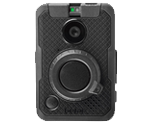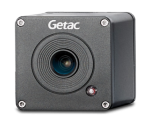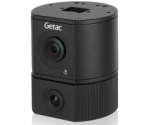
Toledo Police Re-Outfit Their Officers with GVS Body-Worn Cameras
December 7, 2021
A Clearer Picture of Video Evidence
December 7, 2021Meet Nathan Howard. While his official title is Technical Product Manager (TPM) at Getac Video Solutions, it might be easier to call him a solutions creator. Along with his team, he’s responsible for taking the feedback that GVS receives from our clients and turning it into finished products that help the law enforcement officers who use them and the public they serve. These emerging technologies are changing policing as we know it.
New Law Enforcement Technology Product Development at Getac Video
Creating a new law enforcement technology or product is a process that can take weeks if not months, but it all starts with an idea or a real-life customer need. While that sounds straightforward, there is actually a lot of work that goes into gathering the feedback from customers. These possible production ideas are aggregated in a variety of ways, including a portal where customers can leave feature requests; feedback from the support team at GVS who are answering service calls; and information gathered from Getac Video’s boots on the ground. Boots that are filled by sales team members, solution architects (SA), and even the user experience lead that are in the field or at client sites working with the whole range of end-users from the officers to command. This allows the end-users to really have a voice in the process and guarantees that the products are improving in practical ways.
Once gathered, those ideas are all funneled into a back-end system where Nate, and others, can manage and see all the requests.
As a team, we have regular meetings where the requests are reviewed, duplicates are identified, trends are labeled, and the team is able to discern what is and isn’t workable as a new technology in law enforcement. To help expedite the process, different weight values are given to each request depending on a variety of criteria. Duplicate requests, for example, may take precedence over those where only it was only mentioned once. Those with the highest weight often make it into production quickest.
In addition to client requests, our own research and development teams are always providing initiatives to push the envelope in law enforcement technologies.
Once the feature has been approved, it goes through a standard process where Nate or another TPM, once again, takes the lead. Initially, the TPM refines the requirements for the product by working with the customers and doing additional research. Then, major functionality, roadmaps, and milestones are identified for the project. Finally, the work is handed off to the development team.
While in development, the TPM continues to monitor the product until it is completed. Then, they write the product release and inform the customers that Getac Video has a new product. Once the product is completed and released, sometimes Nate or another TPM will do a site visit to check on the product and make sure it is functioning as the client expects.
New Technology Almost Ready for Launch: Getac Real Time Command
One product that is currently towards the end of the development process, which Nate is very excited about, is the Getac Real Time Command Center. “It’s an industry game-changer,” he said. “I’m very excited that we’ll soon be able to offer a very configurable, modular command solution that is affordable and easy to use. Something that can greatly improve safety, awareness, and efficiency to the police force.” The Real Time Command Center will be released early next year and promises to mobilize and revolutionize law enforcement. Using data gathered from a variety of sources, the Getac Real Time Command Center (RTCC) will provide “the components needed to be successful in many different scenarios,” said Nate. Those components will include video from officers in the field, mapping, visualization data, charting, and system integration among others, and instead of having to sit behind a desktop, the Getac Real Time Command Center will be completely mobile and cloud-based.

Looking Ahead to Future Law Enforcement Technology
GVS is also looking ahead to future trends and new technology in law enforcement. While some in the public safety industry are predicting things like facial recognition or weapons detection in the near future, Nate was more cautious while looking ahead with those technologies. “Things have come a long way,” he said, but when it comes to something like facial recognition, “it’s still very hit or miss. It’s still technology very much in its infancy. There is a future for this technology, but it’s just not there yet.” And, Nate stresses, when it comes down to it, it’s very important that this technology works—and works well—before it can be adopted and used on a more widespread basis.
He gave an example of talk-to-text as one of the software products that some of his law enforcement clients have mentioned would be useful. However, all you have to do is talk to Siri or Alexa and you realize that as of now, that technology still has a lot of kinks and quirks that need to be worked out. If you were using talk-to-text for evidence, getting even one word wrong could be disastrous.
We are currently working with partners to advance emerging technologies in law enforcement focused on object recognition; identifying car make and model; as well as facial recognition technology.
As that development continues, we’re simultaneously moving forward with other areas of interest. Nate and his colleagues know public safety and law enforcement personnel have an incredibly challenging job, which is why automation is a big focus for GVS. We want to enable our customers to do their jobs as efficiently and expertly as possible by creating technology that isn’t distracting and is as “hands-off” as possible. One way we’re supporting this mission is by continuing to develop and add more smart sensors and triggers to equipment.
Additionally, Nate mentioned a few other trends in industry technology. Right now, law enforcement officers are running out of room to carry additional gear, so he predicts we will see devices get smaller, thinner and more compact; and we should also continue to see gear created to serve multiple purposes and most importantly, gear that has the ability to integrate with other technologies and devices.
Many of these future trends are already in development at GVS. For example, our Body-Worn Cameras already eliminate the need for an additional wireless microphone since it serves both as a visual and audio recording device. The BWC can also serve as a mobile hotspot to run all devices because it has LTE. The Getac VR-X20 DVR serves dual purposes as well, multi-tasking as a Mobile Data Terminal (MDT).
Passion Makes All the Difference
For Nate and the other Technical Product Managers at GVS, it’s an exciting time to work in the law enforcement technology industry, especially at a place that is so driven by excellence and precision. “Not a day goes by that we are not talking with the customer or doing advanced research to make sure we provide a quality product that is reliable and easy to use,” he said.
There’s no doubt we think Getac rugged computers are hands down the best. But, we’re biased. Getac has over 250 full-time engineers dedicated to finding solutions to real-life problems. From sunlight readability, thermal heat dissipation, power management and mechanical design to unique technologies such as night vision and salt fog protection, Getac Video Solutions has you covered.
The quality of GVS products is obvious, and Nate agrees that doesn’t happen by accident. He attributes it to the level of care and intensity those at GVS have for their job. “It’s that passion to make something great and solve a need,” which makes Getac Video Solutions what it is.





